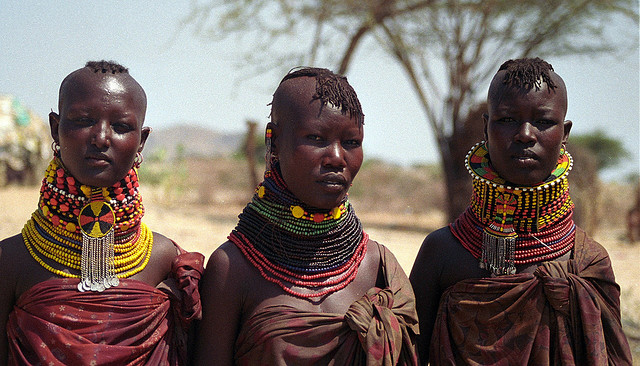The Karamajong People And Their Way Of Life consists of seven sections in north eastern Uganda videlicet Kaabong, Kotido, Abim, Moroto, Nepak, Amudat, and Nakapiripiti.
It’s said that the Karamojong were firstly known as the Jie. The name Karamojong is deduced from the expression “ekar ngimojong”, meaning “the old men can walk no further”. According to tradition, the peoples now known as the Karamajong People Cluster or Teso Cluster. Are said to have migrated from Abyssinia between the 1600 and 1700 Announcement as a single group. When they reached the area around the ultramodern Kenyan-Ethiopian border, they’re said to have disintegrated into several groups. Including those that came Turkana, Toposa, and the Dodoth. The group that came known as the Toposa. Continued to present-day southern Sudan; the Dodoth settled in Apule in the northern part of the present-day Karamoja. The Turkana settled in Kenya where they’re now and moment’s Jie of Uganda can have resolved from them. Moving up the scar into moment’s Kotido District.
Main Karamoja Body
The main body continued southwards, reportedly confirming of seven groups or clans. Who settled in moment’s southern Karamoja. Ultimately incorporating to come to the three clans now being the Matheniko in the east around Moroto Mountain, the Pian in the south, and the Bokora in the west. Still, a significantly sized group went west and formed the Iteso, the Kumam, and the Langi. It was this group who were said to have used the expression “the old men can walk no further”.
They’re generally reactionaries who take a lot of pride in their culture and customs. Because of their pride the Karamojong are known for being extremely hostile to a foreign hindrance. With their traditional life, they view trends similar as a drug, casing styles, apparel. And technology as a vexation to their comfortable traditional life.
The Karamajong People And Their Way Of Life
History of Karamong in Uganda
The Karamojong people were believed to have migrated from Ethiopia in the late 1600 Announcement. They latterly got divided into different groups. Whereby the other groups moved into Kenya which latterly redounded into the development of new societies. They formed the Kalenjin group and Maasai culture. But The Karamajong People got tired on the way and remained behind where they enthralled the Moroto mountain. They latterly deduced their name meaning the ” tired old man ” they substantially speak the Karamojong as their traditional language. They have a high population to measure to over people in Moroto. But presently, those who tried to borrow the new way of life, have also migrated and lived in civic centers and another different corridor of the country.
Social association of the Karamojong People
Karamojong’s predominant point is its age system which occurs from generation to generation. With the age gap between consecutive generations, the structure is inescapably breaking down. After laws have been agreed by their close neighbors, the Jie, in the nineteenth century.
The Karamajong People system, however, is adequately robust. In order to repel an escalation in conflict through generation which has lasted. Further than 50 times if this can no longer be resolved peacefully. The split leads to a shift in power from the being group to the coming generation and a new status quo.
Culture of the Karamojong
The Karamojong life is substantially cattle keeping which is one of the strong artistic beliefs of this group of people. Crop civilization is a secondary exertion, accepted only in areas where it’s practicable. And has a few rich soils to help in crop product. The cattle are substantially kept for milk and blood which is their main consumption.
Due to the thirsty type of climate of the region. The Karamajong People have always run short pastoral transhumance for about 3-4 months in a time, due to the deficit of the ranges, they’re forced to move their beast. To the neighboring sections in hunt of water and pasturage for their creatures. The Karamojong life substantially depends on water and ranges which as forced them to move into different places and latterly get to interact with other ethnical groups whereby, indeed some of them have migrated to settle in other places of the country.
The Karamojong Manyattas
The Manyattas are Karamojong townlets located near Kidepo Valley National Park. The people live in peace with nature though the rainfall isn’t so favorable.
They dress partially naked and are decorated with ethnic markings.
They’ve traditional mooches with a standard collaborative grange. And during the wet season these people stay in large endless Manyattas, but dry season men substantially stay in Kraals as they’ve to resettle for water and pasturage.
They love storytelling on fireplaces led by elders with tales of the once raids. While belting their traditional beer in a pot, they also love dancing in the gloamings and give names to callers.
Their traditional cotillion is called Endaga which is performed substantially. During courting, marriages, and when a caller visit. The girls always lead the cotillion with multiple globules on their heads, neck, wrists, and arms while men follow with energetic cotillion movements.
Marriage among the Karamojong People
A given number of cattle must be paid to her family and clan, for a wedded woman to come to a sanctioned member of her hubby’s clan and a full member of the community.
The number of cattle paid as bridegroom price ranges from 10 to 150 or indeed further cows including other creatures like scapegoats depending on the size of the woman’s clan because the cattle paid as bridegroom price participates amongst the woman’s cousins and members of her clan. Thus, the bigger the clan of the woman, the further cattle needed to be paid by the suitor.
The standard number of cattle paid by a Karamojong man to his woman’s family is about 50 cows though some men tend to pay further to earn prestige and prove that they’re man enough to watch for their women.
The high bridegroom price is also paid in situations where the couples have been living together immorally before paying the bridegroom price to the women’s family to compensate for all the time, they’ve been together including having children without bridegroom price.
The incapability to pay bridegroom price has caused numerous youthful men to resort to cattle rustling to get cattle for bridegroom price and earn status in their society.
When a man and a woman decide to elope and get married without paying the bridegroom price won’t be considered married by the community members. The children they bear will still belong to the woman clan until the bridegroom price is paid.
The Karamajong People And Their Way Of Life
Women’s behaviour
Women as well as children born from a marriage where bridegroom price wasn’t paid aren’t generally buried but are just thrown outside the Manyattas for the wild creatures to eat.
Men practice polygamy, women are anticipated to be monogamous after marriage. Purity before marriage isn’t considered in Karamoja as both girls and boys engage in sexual intercourse with different mates before marriage.
For a Karamojong youthful man to be considered ready for marriage, he’s anticipated to scuffle a woman he wishes to marry to test his strength and see if he’ll be suitable to cover and take care of her. In case he loses he’ll be considered sissy whereas if he wins, he’ll be allowed to pay the bridegroom price to marry the woman.
Karamojong marriage involves beautiful beautifiers on the ladies and marvelous cotillion movements of the Ekaro cotillion that’s performed on marriage observances.
Karamojong diet
The life of a traditional Karamojong rotates around the beast, cattle. Raw milk and blood attained after puncturing the skin of a cow is the staple diet for the Karamojong besides smoked meat, yogurt, cow ghee, smoked and fresh beef.
The Karamojong People language
The Karamojong language (spelled Ngakarimojong or N’Karamojong in English) is a Nilotic language spoken substantially in the Karamoja sub-region of north-eastern Uganda. Nearly affiliated languages and cants are spoken by numerous further peoples, including the Jie, Dodoth, Teso (in Uganda), Turkana, Tesyo (in Kenya), Jiye, Toposa in South Sudan, and by at least one lineage in Ethiopia, the Nyangatom. Jie and Dodoth (Dodos) are counted as cants by Ethnologies 16 but as separate languages.
Karamojong traditional wear
You’ll find the checked distance, traditionally appertained to as nakatukok, being used as wrappers or robes while the globules occasionally serve as jewelry or beautifiers.
The multi-colored and checked vesture of the Karamojong people. Which isn’t any different from that worn by the Maasai and Pokot in bordering Kenya. The Karamojong’s traditional vesture is appertained to as a Maasai mask. Because outside Karamoja, nothing wears the beautiful fabric as a dress form. But, rather, use it to cover up like a mask or heavy scarf.
But in Karamoja, this traditional mask is won not just to cover the body but to also depict gender places and social status. Then, the maturity of the people- children, grown-ups, and elders likewise- wear the cloths of numerous colors, locally called nakatukok.
The males knot the nakatukok over one shoulder. As the rest of the cloth hangs over the body. Some men also make special skirts out of clothes.
The ladies, on the other hand, turn the clothes into short, pleated skirts. Matched with bright-multicolored sleeveless blouses. Again, it isn’t a big shock for the women to wear just these skirts with elaborate jewelry over their cases working as the blouse.
Both men and women also use the nakatukok as wrappers. One may also suppose the nakatukok is just apparel with no strings attached to its wearing. But that isn’t the case the colors of the nakatukok have meaning. In addition to reflecting social and power classes among the Karamojong.
Nakatukok
Nakatukok in colors like green and grandiloquent is for ladies. According to Lokwii, nakatukok with darker tones including black, blue, and sanguine are for the youth, as well as herdsmen and soldiers, because they’re good for disguise.
Nakatukok with brighter colors like unheroic and red, adds Lokwii, is the save of elders, kraal leaders, the rich, and the important, a poor man cannot be given a leadership position.
Take the multi-colored and checked vesture of the Karamojong people. Which isn’t any different from that worn by the Maasai and Pokot in bordering Kenya. In fact, to the regular Kampala reside, The Karamajong People traditional vesture is appertained to as a Maasai mask. Because outside Karamoja, nothing wears the beautiful fabric as a dress form. But, rather, use it to cover up like a mask or heavy scarf.

